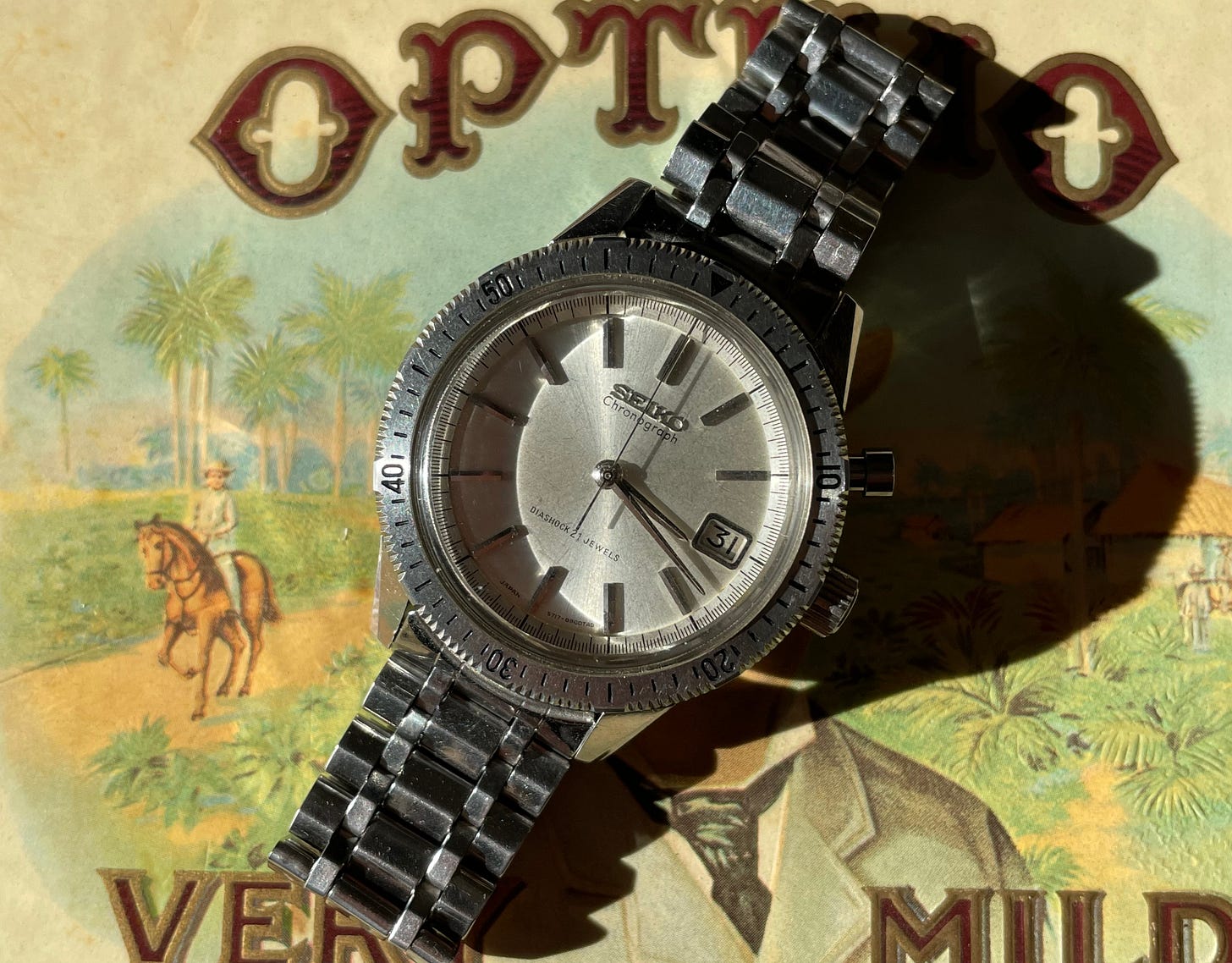Vintage/pre-owned collecting is the true frontier of the watch market. With so many factors that go into a purchase, it’s often difficult trying to narrow down the search. Sometimes, with vintage, you don’t have the luxury of hunting for condition. A piece may be so rare that just seeing one break onto the scene is nearly enough to justify a purchase.
This decision of making a purchase on a vintage/pre-owned watch is admittedly daunting, one that feels impossible in the moment. From history to seller, I often find myself consuming every bit of information possible when facing this situation.
Today’s article dives deep into this idea of toying with a purchase. A common aspect of collecting lies in the buyer’s premium, and whether it’s justified. Speaking in a general sense, an uptick in condition or completeness may leave a buyer wondering, “Is it worth it?”
Our discussion starts with an argument from each end of the spectrum. I’ll add my 2¢ to the conversation based on years of experience collecting, and we’ll finish with a hopeful understanding of where to spend the extra cash.
The Case for Condition
A collectable watch will always hold value in good condition. While it’s nice being able to snag a prospective piece below market value in shabby condition, a true diamond in the rough is worth its pretty penny. Consider staple references in the Datejust line, Speedmasters, or even more affordable icons like the Seawolf - all are safe bets for value when condition is prioritized.
Condition is often coupled with an aspect of originality, but this differs from a ‘full set’ piece. Perhaps said vintage watch has its original strap or factory crystal - this speaks to a life of easy use, and inherently adds value.
A ‘stickered’ Explorer II, I’m jealous of its buyer (;
Often, condition is negatively correlated with practicality. You wouldn’t take the finest condition Seamaster on a hike, or to the depths of a swimming pool.
Paying for condition is safe, almost conservative in nature. Chances are that even after a prime example is sold, the next buyer in line would happily take that piece off your hands. When applied to specific references such as those with a cult following, this rarity will nearly always demand an appropriate price. As the market fluctuates, those in good condition are the glue that holds the foundation of the watch world in place
An Argument for Completeness
A full set package is the type to garner attention from all corners of this hobby. I can’t help myself from saving posts of truly fine sets whenever I see them for sale (even when I’m far from affording them).
A full set tritium Sub recently sold by our friends @Huntingtoncompany
They’re statement pieces, and a mark of taste in collecting. No matter the watch, a full set example earns clicks, eyes, and is the center of the room with ease.
This speaks to the true rarity that exists in the world of ‘full sets' compared to those that are pure in condition. However, this sentiment doesn’t appeal to every collector. Some folks don’t care about the details in a set, especially when watch companies intended for their packaging to be disposable decades ago.
Rolex 6542 “Use box for cigarettes after removing this card and watch support / Credit: Antiques Roadshow
At some price points, the full set is easily justified, and others, it’s harder. It’s usually the die hard collectors who shell out a hefty premium for a niche watch that includes its original set. It goes unsaid, however, that scoring a full set is the vintage collector’s dream.
My Thoughts
Personally, I err on the side of the unifying aspect between these two schools of thought - originality.
In my eyes, there is such a thing as ‘too fine’ condition. This is when a piece reaches into ‘museum quality’ territory. The mere thought of getting door scuffs and having these watches polished is a nightmare for the vintage enthusiast.
Truthfully, while it’s easy to view things as either black or white, this topic deserves a gray middle ground. The ideal watch buy features both excellent condition, and an aspect of originality (whether it’s the box, hang tags, etc.). When these stipulations are met, the buyer’s premium is justified.
My Seiko 5717 comes to mind - an excellent condition piece with some original hang tags, one that appeals to both the niche collector, and appreciator of watch history.
There is, though, one final solution to this discussion - both is better.
As financial situations differ between collectors, I would opt for any opportunity to achieve a full set, prime condition piece when possible, especially if it intends on being a keeper. This entails sorting from ‘high to low’ on Chrono24…something I know is the opposite of what we usually do.
Ultimately, there’s benefits in both collecting for condition and completeness. Considering these factors in any vintage watch decision is what I believe leads to a happy purchase - I’d love to hear if you agree!





![Rolex] Some interesting instructions on the box of a 1960 GMT Master... : r/Watches Rolex] Some interesting instructions on the box of a 1960 GMT Master... : r/Watches](https://substackcdn.com/image/fetch/$s_!Fp1p!,w_1456,c_limit,f_auto,q_auto:good,fl_progressive:steep/https%3A%2F%2Fsubstack-post-media.s3.amazonaws.com%2Fpublic%2Fimages%2Fa97f8ebd-6dfd-47ae-b2e4-45a7269a1d08_1584x878.png)
